- Valorant vs Apex Compared - January 11, 2023
- Ascent Valorant Guide - September 22, 2022
- Haven Valorant Guide: The Unique Three Site Map! - August 18, 2022
Do you like to take challenges head-on? If you play Valorant and are tired of getting crushed even after trying offensive duelists like Reyna, why not pick Phoenix in your next match? Phoenix is one of the first agents introduced in the game. He might not be getting much love from players anymore, but the ones that still stay true to the basic plays love to tackle enemies with Phoenix.
If you’re interested in knowing how to take your rank up in Valorant with some primary usage of utilities, here’s a detailed guide about Phoenix.
Let’s look at how Phoenix made waves in the game when it first came out.
The Agent That Fell Off
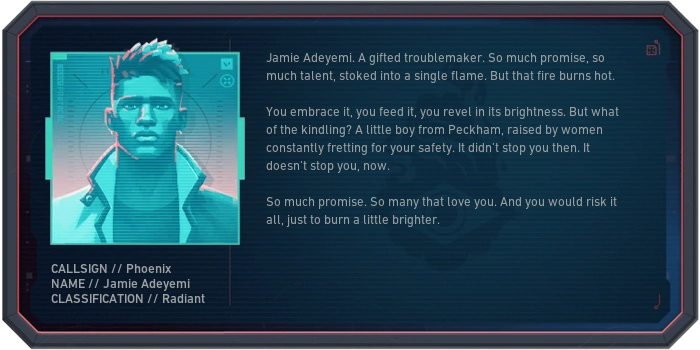
Phoenix’s real name is Jamie Adeyemi. His codename was Apollo in the earliest stages of development. Phoenix is a Radiant and plays as a duelist in the game. He was among the first line of agents in the game, making appearances in certain cinematics with agents like Jett, Killjoy, and Viper. He hails from London, England, and is known for his self-absorbed personality, referring to himself as ‘The King’.
When Valorant was making waves everywhere in its initial days, Jett battled with Phoenix for the title of the best agent in the game. Phoenix impressed popular streamers and professional players with his effective kit, whatever rank it was, someone was always picking him in the first instant.
Unfortunately, with the introduction of other agents, Phoenix became less effective. Few people are willing to take the risk of picking him because of his mediocre abilities. Phoenix quickly went ignored as agents like Chamber, Neon, and others stepped in.
Nevertheless, he’s still great for new players that need basic knowledge about how the game works. Even today, players can make incredible plays with Phoenix that seemed like lost situations. So, he’s not as bad as you might think.
Phoenix’s Involvement in Valorant
Ever since he was a kid, Phoenix had been getting into trouble. He didn’t listen to his parents most of the time, and although he didn’t think about the consequences of his actions, everybody remained concerned about him. In the Dossier, the Blackmailer constantly talks about his reckless behavior and impatience.
Phoenix also attended a performing arts school but was later suspended. According to the Firestarter player card in Phoenix’s contract, he burned the building down later. Phoenix made his way into the Valorant Protocol as its ninth agent and has since been one of its most active-duty members.
In the beginning, Phoenix didn’t receive much information from the team. Phoenix stabilized the situation in Rabat with his team and then learned everything about the threats to Earth. He failed to stop a spike detonation in Venice, and the next day he saw his Omega counterpart in Rabat.
He then refused to work with the Protocol if they were to keep secrets from him. Phoenix was a problem child during his childhood years and you can see this trait in his personality even now as an adult!
Phoenix’s Appearance
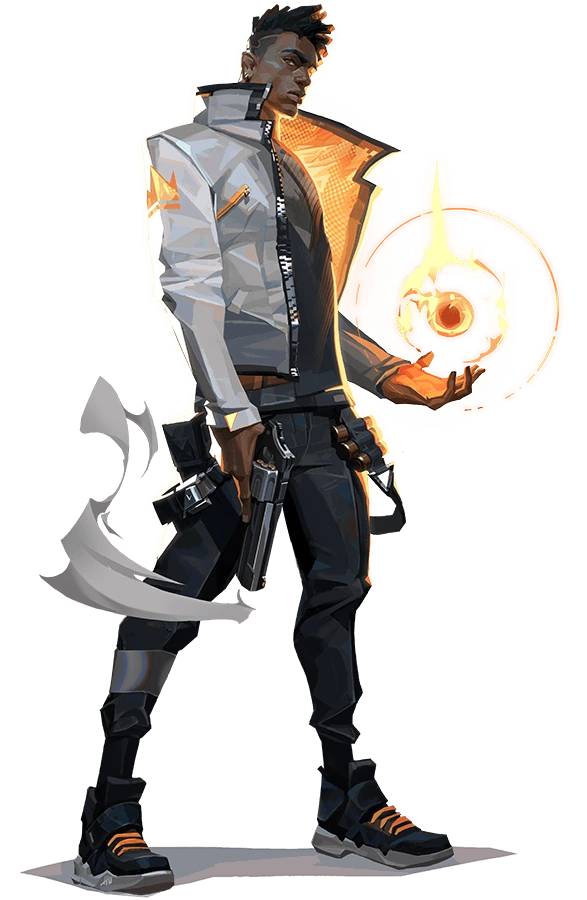
Phoenix is a dark-skinned agent of Afro-British lineage. He has black hair with the tips dyed in bright orange color and arranged in short dreadlocks. He also has prominent facial features, like a sharp jawline and high cheekbones.
Phoenix also wears gold earrings and a ring with a crown (this guy really wants to be the king now, doesn’t he?). Much of his appearance has to do with his nature as a Radiant. For example, he wears baggy pants with straps for holding bullet shells.
He wears a black long sleeve shirt with the white graphic of a phoenix on it. He also uses a white jacket with colors similar to fire inside and a crown emblem on the right shoulder.
The agent receives a lot of praise and criticism from other members due to his enthusiasm. Phoenix is confident in his abilities and isn’t scared to rush into the enemy. His teammates criticize him for this, saying it sometimes gets in the way of handling a situation efficiently.
Phoenix attended performing arts, and some of his voice lines depict his sense of grandeur. The agent thinks highly of himself and is willing to teach everybody how to tackle things his way.
“Let me show you how the boss does it.”
-Phoenix, on Barrier Down
Yoru and Phoenix regularly engage in rivalry and keep the competition going even in cinematics (maybe because their arrogance matches). Despite his wrecking behavior and impatience, he has a good relationship with many agents. Jett is his biggest supporter, and the two constantly keep each other’s spirits high in their voice lines.
Phoenix’s Abilities
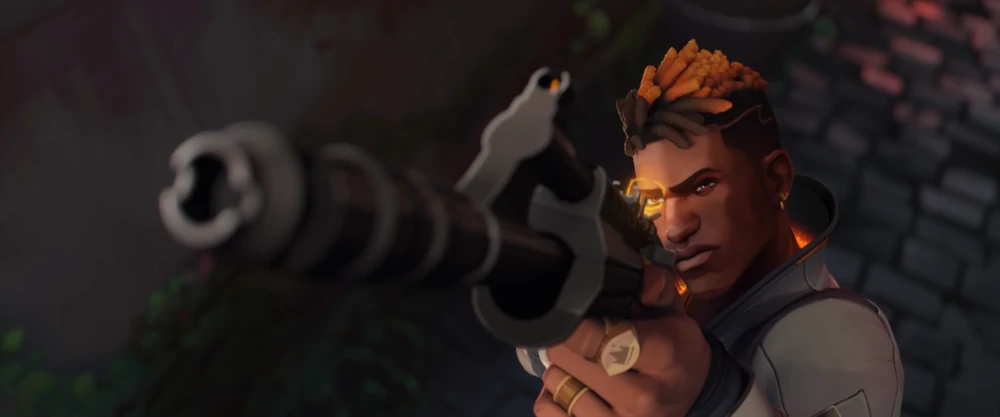
Part of what made Phoenix rise initially were his abilities, which didn’t help his cause much as the game went on. As a duelist, Phoenix must be the first to engage in combat. His kit is sufficient to give him enough advantage over his enemies, and he can even give himself a helping hand if he needs it.
Following are his basic, signature, and ultimate abilities:
#01 Blaze
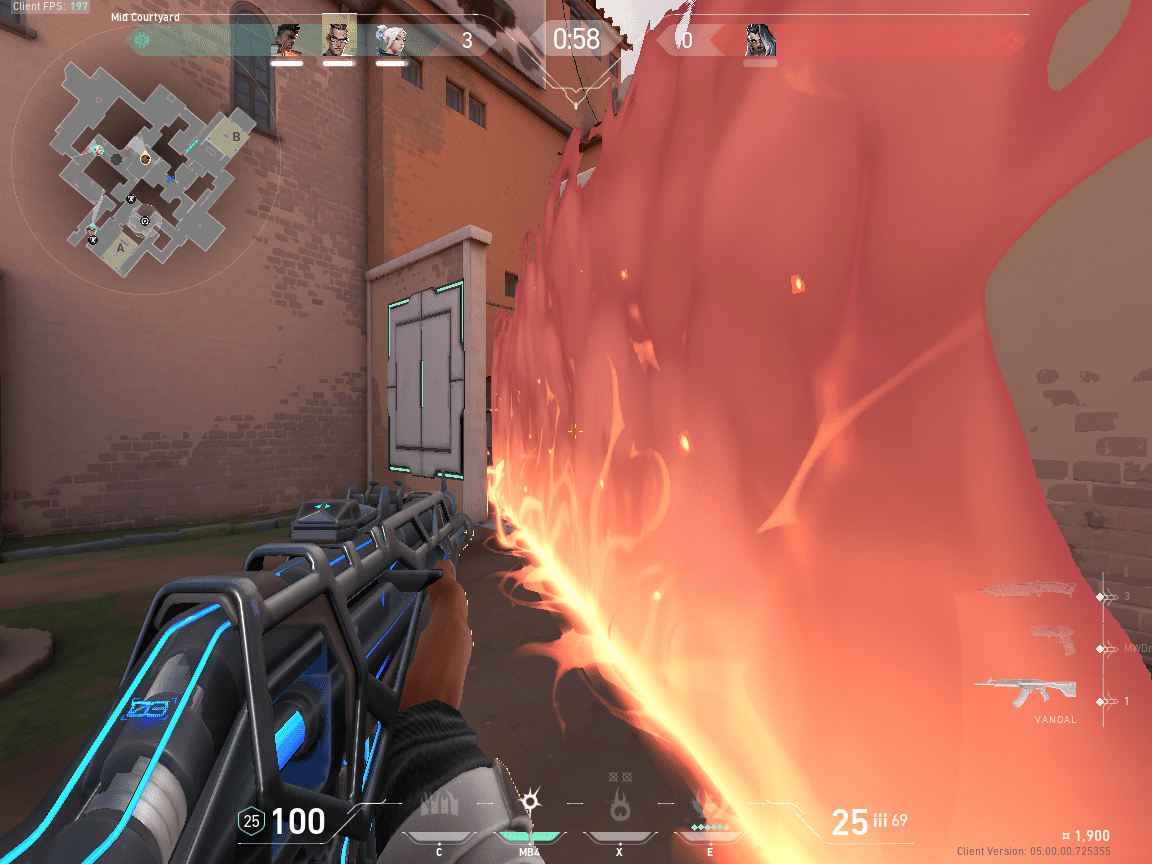
As per the mythical creature, Phoenix’s basic ability involves a firewall that can fend off enemies and damage them. The wall stays up for eight seconds and damages 30 health for every second an opponent stays in the fire.
Although the wall covers a large area when deployed, it will not go through solid objects like walls and boxes. So, it’s essential to choose an appropriate location for putting up the wall. Players can buy it once every round for 200 credits.
Phoenix’s firewall is relatively high, preventing enemies from seeing you or your teammates, even if they are on higher ground. Holding the left click and swiping away while deploying bends the wall in the direction the players want to. The degree of curvature of the wall depends upon the extent of swing the player takes while using the wall.
Phoenix can create a protected path for his teammates to push through a specific area unharmed. However, enemy bullets can still pass through the wall and deal damage. It also deals damage to teammates.
Phoenix can also regenerate health from his wall at a steady rate of 6.25 health points every second. So, it allows the agent to make some sacrificial and risky plays while his team gets to a site safely.
#02 Curveball
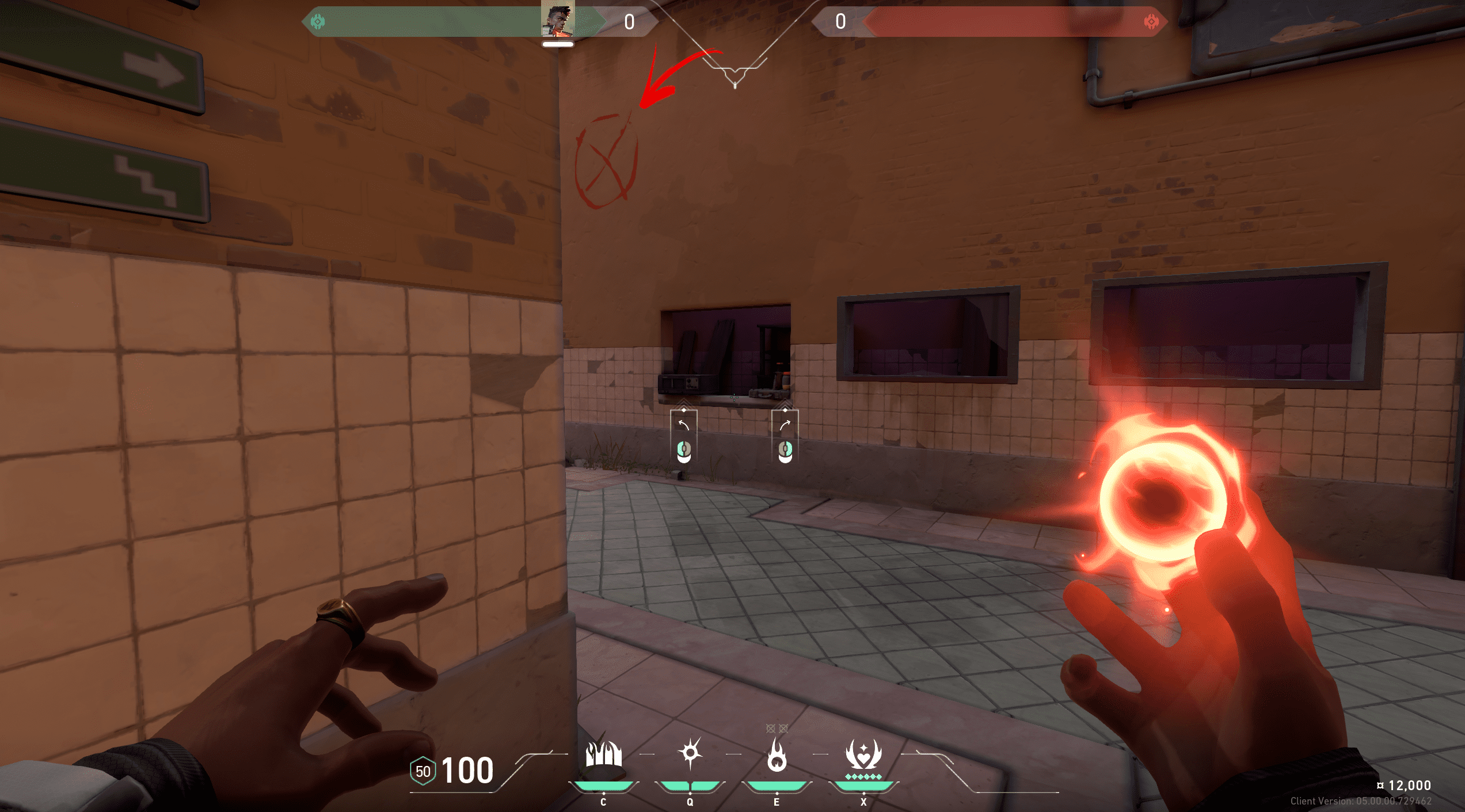
Perhaps one of the most broken abilities of Phoenix is his Curveball. It’s a flashbang that the agent creates from his powers as a Radiant. The player can buy two such flashbangs in a round for 250 credits. Phoenix’s flashes are different in that they bend at a complete 180°, giving the agent all the time he needs to clear out an angle or position.
The click decides which direction the Curveball will go. If the player wishes to use it for an angle on the right, he will need to press the right click. To flash the left side, click the left click. The flash temporarily blinds the enemy, flashing out their screens entirely. It takes 0.7 seconds for the flash to detonate, and the opponent stays disabled for 1.1 seconds. Looking away reduces the effects of the Curveball.
Curveballs cannot go through objects; instead, they rebound and change their directory, which can be troublesome for both Phoenix and his teammates. One of the primary reasons for the failure of Phoenix was the Curveball because it could hit the smallest object and blind everybody on the team, causing heavy losses.
Conversely, it can also make way for some intelligent plays, such as using the ground to bounce flashes off in angles enemies are not expecting.
“With great power comes great responsibility”; So, make sure to utilize flashes with great responsibility or else you’ll end up flashing your teammates, or worse, flash yourself, which is a common complaint with Phoenix choosers.
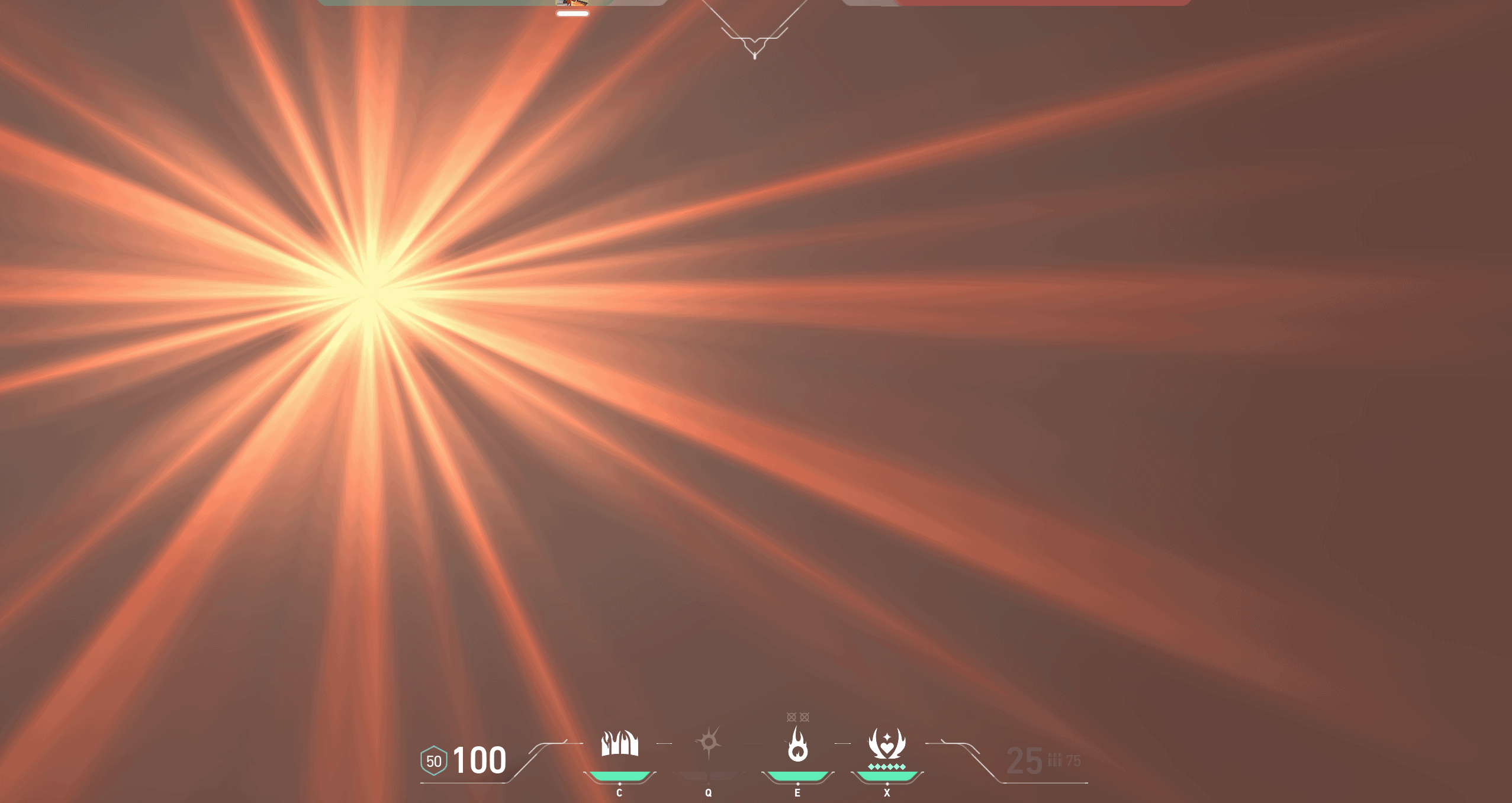
#03 Hot Hands
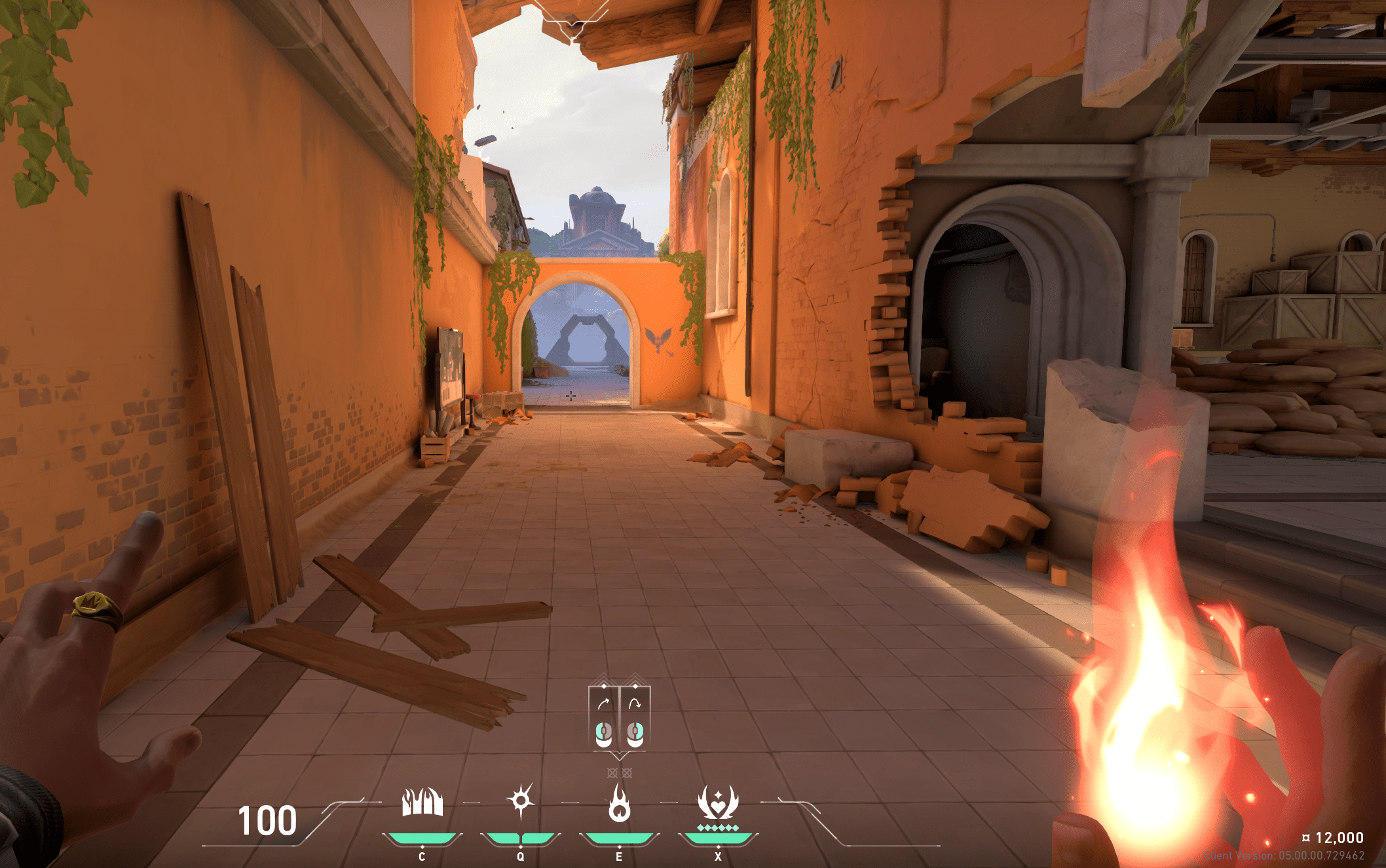
Hot Hands is Phoenix’s signature ability. It involves a fireball that detonates upon contact with a surface. After hitting the ground or an object, it explodes and leaves an area of fire nearby that can damage enemies.
Phoenix receives this ability every round and also regains it after two kills.
The fireball has a typical trajectory and can cover a significant distance. But it won’t cover large distances and drop straight down if thrown at a greater height after a second or two. The area where it explodes remains under fire for 3.25 seconds and can deal extravagant damage to enemies at 60 points of health per second.
Like Blaze, Hot Hands also grants healing power to Phoenix, and the agent can receive 12.5 health points every second. It also causes team damage, so be careful to use it around teammates. The fireball can ricochet off of surfaces, giving Phoenix the chance to take enemies out from a choke point, either by burning them or hunting them down.
There are several ways to use this ability, whether offensive or defensive. It helps clear out enemies from a site, making way for a plant or defuse. If Phoenix engages in a battle and takes significant damage, he can always fall back to a safer spot and heal by deploying Hot Hands beneath him.
You can heal yourself or slow down your enemy’s push with this amazing utility!
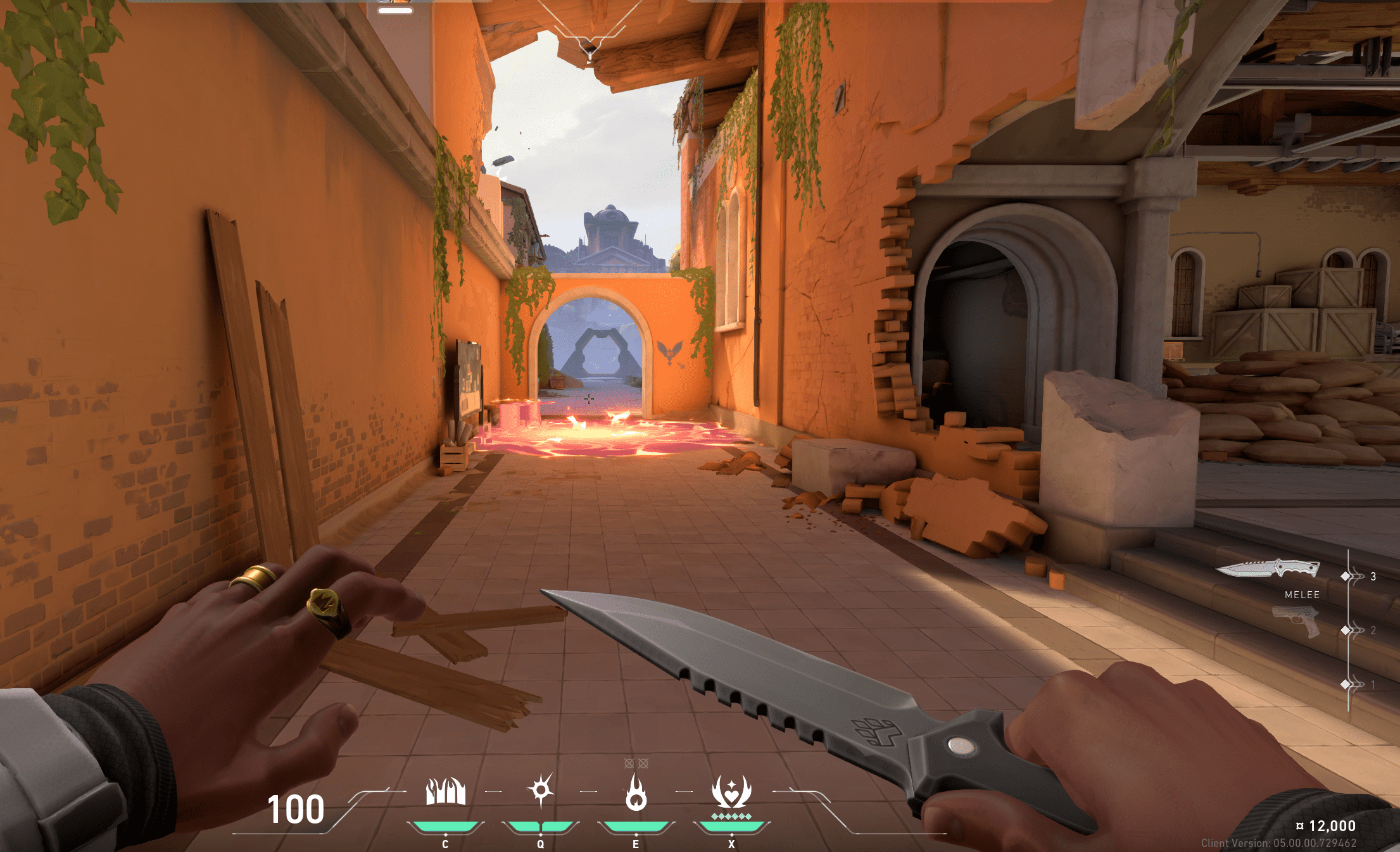
#04 Run It Back

Phoenix’s ultimate ability is like a second life. After acquiring six points, Phoenix can leave a marker at his location and push through the map. He has a limited time to use this ability, and if the time runs out or he dies during the power, he returns to his marked location with full health.
However, if Phoenix had Shields before using the ability and dies during it, the Shields do not regenerate. Phoenix only has ten seconds to use his ultimate ability. He can also use all of his abilities during this duration. There’s a marker on the screen when the power is in function, and Phoenix gains an orange outline on his body. He can use it to push in a site blatantly and take out unsuspecting enemies.
Run It Back is also vital to learn about the enemy’s location. Even if Phoenix doesn’t win his duels, he knows where the opponent was, and it’s ample knowledge to use for the agent and his teammate.
But Phoenix mains should be careful to use the ability when they have teammates around. When Phoenix returns to his location, he usually takes a second before equipping his weapon. If a flanking opponent catches the marker while Phoenix is in his ultimate state, it can cause problems as the enemy will kill him as soon as he comes back.
Here comes ‘The King’ (to get knifed once the enemies shoot you in your ULT)
Phoenix’s Update History
Phoenix became an underused agent with time, and part of it had to do with no improvements. Although he had an impressive kit which made him a crucial duelist in any team, Riot couldn’t find anything about him that could make him even better.
Nevertheless, here’s a concise detail about how the agent went through the patches:
- v0.50: Cost of Curveball increased to 200 credits. In Hot Hands, the height required to jump out increased to 120, and the damage tick speed increased.
- v1.0: Blaze’s duration increased to 8 seconds, damage changed to 1 every 0.033 seconds, and healing changed to 1 every 0.16 seconds. Curveball’s duration advanced to 1.1 seconds. Healing in Hot Hands changed to 1 every 0.08 seconds, and weapons already reloaded on respawn from Run It Back.
- v3.0: Curveball’s cost increased from 200 to 250 credits.
Phoenix’s Performance in Official Matches
These days, Phoenix faces harsh treatment. Players have ignored the agent for a long time, and his statistics have dropped significantly. Numbers from Valorbuff show that the agent dwells in the lower bottom of the rankings, with other criticized agents like Cypher and Astra.
Out of 19 agents, Phoenix has the second-lowest pick rate with just 10.3%. Only Astra has a lower pick rate than him at 4.7%. But when it comes to winning games, Phoenix is still in the competition. With a small percentage of people picking Phoenix, he still has a better conversion rate than a few other agents.
Players using Phoenix have been able to record 46.1% of matches in victory, bringing him to the fifteenth spot on the list. Reyna, Cypher, Jett, and Sage are the closest to Phoenix in the lead, with both Reyna and Cypher winning 46.4% of their games, Jett with 46.5%, and Sage having 46.7% victories in her records. Omen, Yoru, KAY/O, and Chamber are at the bottom, accounting for 44.5%, 44.4%, 44.2%, and 42.3% wins, respectively.
In the ranks, Phoenix’s pick rate declines steadily. Iron lobbies report the highest pick rate for the agent with 9.98%. They also have a respectable win rate of 47.12%. Bronze lobbies have the highest rate of wins, with the agent at 47.33%, followed closely by Silver with 47.31%.
As for the higher ranks, Radiant games have the lowest incidence of Phoenix mains with just 0.8%. They’ve also managed 45.98% victories, implying that the conversion rate for Phoenix is still quite impressive.
When it comes to teammates, Phoenix’s best partner has been Killjoy. The two have done great work in matches, with 49.3% of games ending in victory where Killjoy and Phoenix were together. Reyna is Phoenix’s next best teammate, following closely behind Killjoy at 49.1%. Next in line is Chamber trailing at an impressive 48.9%.
How to Play with Phoenix

Phoenix is an excellent duelist for players looking for simple abilities to catch their enemies off-guard. Although several agents have rendered Phoenix less successful, it doesn’t mean he is ineffective. There are many ways in which players can work with the agent brilliantly.
One of Phoenix’s principal characteristics is his aggressive style of play. Whether you learn it from other professional players or watch Valorant’s cinematics, Phoenix will always be the first guy to go in. Therefore, Phoenix mains should never hesitate to enter a site alone and remove the enemies.
Phoenix’s kit is also helpful in almost every situation. Therefore, no maps are slightly more favorable for the agent. His utility is suitable for pulling enemies out of their hiding, and Phoenix mains should do just that, enabling them to get kills for their team and complete their objective.
Even when defending, Phoenix doesn’t have to fall back much. If the enemy is rushing at the site all at once, Phoenix should retreat, but not a long way back. Phoenix can easily hold an area with a good teammate, even if all five enemies are pushing. Using flashes and his fireball can be of great importance to help him recover after a battle.
One of the best things about Phoenix is his ability to regenerate health. Because of his kit, he can peek at angles quickly and take out enemies. Even if the enemy manages to hit him, Phoenix can always run away to heal and return to the fight, as aggressive as ever.
What Maps Are Good/Bad for Phoenix?
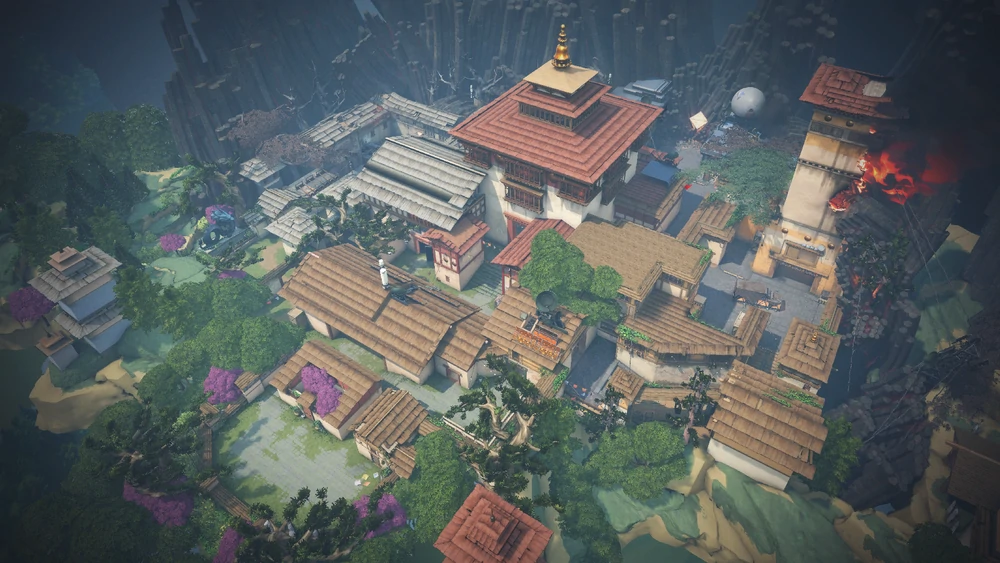
As stated earlier, there are no bad maps for Phoenix. As a duelist, Phoenix has no measure of error because he can use his kit for quick battles. Nevertheless, Valorbuff provides detailed insight into the agent’s usefulness on different maps.
Although all maps boast a similar win rate for Phoenix, Haven has been the best map for the agent. It features tight angles and small spaces, adequate for the agent to use his utility to hamper the enemy’s moves. It’s also the map where Phoenix has the greatest pick rate at 9.4%, and his win percentage is 47%.
Ascent and Bind follow Haven closely, with a pick rate of 8.3% each. They also have the best win percentages for Phoenix, recording 46.7% and 46.4% wins for the agent, respectively. Split also has a similar pick rate of 8.3%, but its win percentage is lower than the former two at 46.1%, making it a less favorable map for Phoenix, owing to its large number of choke points.
Breeze is another map with a lower pick rate than the above three maps at 7.2% but has a slightly higher incidence of victories for Phoenix at 46.3%. The other two maps, Icebox and Fracture, remain a lousy option for Phoenix, as he appeared for these two in 7.4% and 7.9% of matches, respectively. Icebox has a higher conversion rate than Fracture, accounting for 46.1% wins. Fracture has a win percentage of 45.9%.
What Guns Are Good/Bad for Phoenix?

Phoenix is an agent that has to battle head-on. Therefore, the Vandal and Phantom are the best weapons he can use in a buy round. Vandal remains far superior in terms of statistics, providing 44.9% of the kills by the agent. Phantom lags behind its counterpart substantially, with just 15.1% of total kills to its name.
Vandal has also been effective at longer distances, killing enemies from an average length of 18.58 meters, compared to Phantom, which has an average distance of 16.52 meters. Vandal has also given 23.7% headshots, while Phantom has 20.4%. The only area where Phantom surpasses its rival assault rifle is the body shot, which has 70.2% as opposed to Vandal’s 68.4%.
Spectre remains the most effective SMG in the game, allowing for half-buy rounds to be equally destructive. It’s the third-best weapon for Phoenix, providing 11.5% kills. At an average kill distance of 13.85 meters, the Spectre has been an effective weapon in aggressive pushes. Sheriff is also a crucial half-buy weapon, with just 3% kills and 39.6% of those coming from headshots, just a little short of Marshal.
In pistol rounds, the Ghost and Classic remain the weapon of choice for almost all Phoenix mains. In the past thirty days of competitive matches, Ghost has provided Phoenix with 7.1% of his total kills from an average distance of 17.26 meters. It has also recorded an extraordinary amount of headshots at 26.7%. Classic managed to get only 3.6% kills from 14.06 meters away on average.
The Operator and Marshal are other weapons that can be useful for Phoenix mains. While the Marshal is an excellent weapon for half-buy rounds, the Operator requires Phoenix to either win several rounds consecutively or save. Only then is the Operator useful. As for Marshal, it already has the highest percentage of headshots among all weapons, but it has only 1.2% of total kills for Phoenix, so its usage is quite doubtful in certain situations.
Phoenix Valorant Guide: Conclusion
Simply put, Phoenix is still a viable agent. His kit is helpful in many ways, but you’ll have to learn where and when to use it. Phoenix wasn’t a mediocre duelist. In the beginning, other agents have powerful abilities that make Phoenix a slower agent to play. Phoenix might be the best pick for those who like to play simple and focus on gameplay more than using an agent’s kit.
Phoenix will do the trick if you’re trying to settle in the game as a duelist who can get in the enemy’s head with his incredible aim and sharp utilities. Keep grinding because Phoenix always does:
“Look, don’t stop resting, still work to do.”
-Phoenix, Round Start

